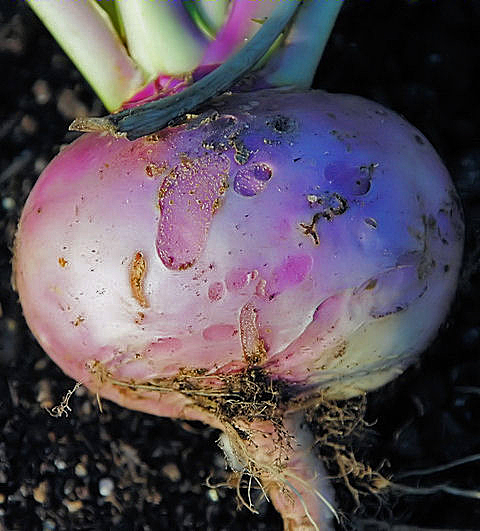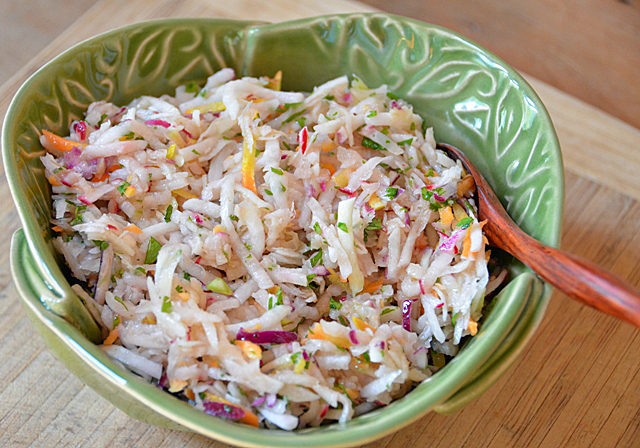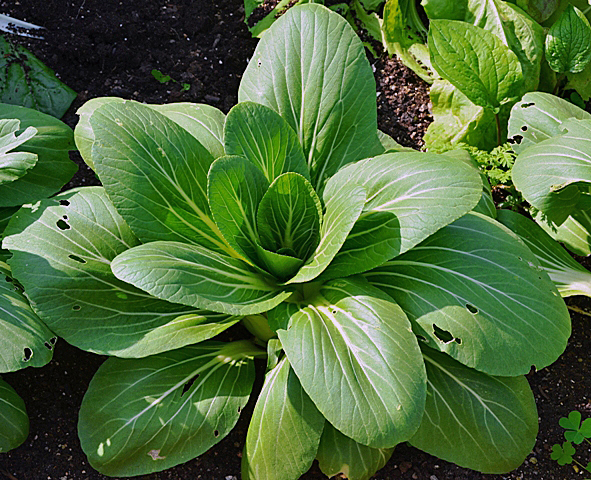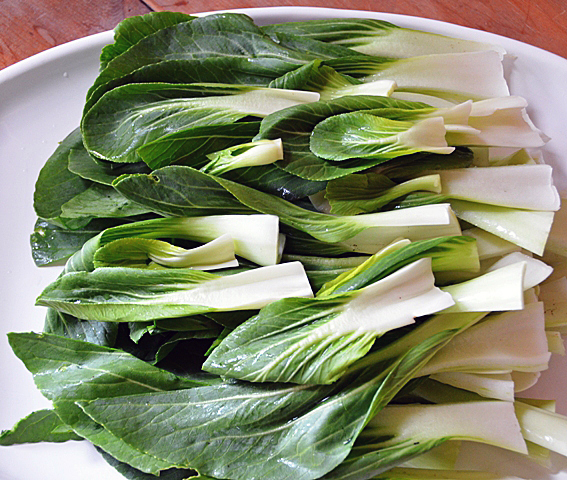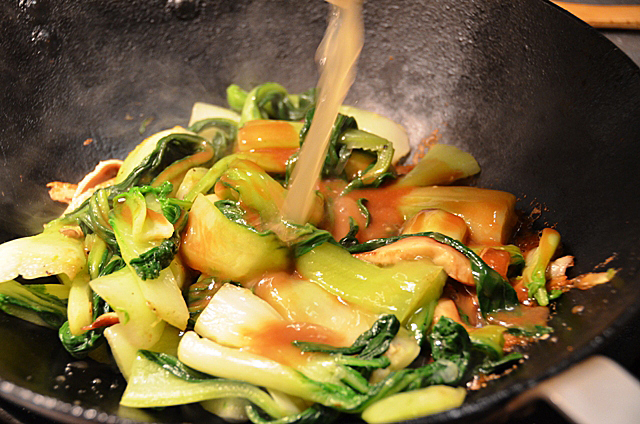A dish that I have to make every year for the Chinese New Year celebration is strange-flavor eggplant. It is Joe’s absolute favorite and I must admit, because it is a dish that benefits from being made several days in advance, I occasionally forget to put it out with all the other side dishes.
Strange flavor eggplant was made famous by the late Chinese scholar, chef and restaurant owner, Barbara Tropp. I have enjoyed reading and cooking many dishes from both her books, The Modern Art of Chinese Cooking and China Moon, named for her Chinese bistro. It is in China Moon, that she shares the recipe for Strange Flavor Eggplant in a chapter entitled, “Nuts, Pickles and Nibbles”. Ms Tropp says of strange flavor, “a classic name for a series of Chinese dishes that typically employ a mixture of vinegar, sugar and chili, this is strange as in “wonderful, unique or ineffable”. Fushcia Dunlop in her book “Land of Plenty” describes strange-flavor as one of the 23 flavors of Sichuan. “It is the harmonious mixing of salty, sweet, numbing, hot, sour, fresh-savory and fragrant notes,” she states.
The flavor is not so strange, but quite addictive. The texture is reminiscent of eggplant caviar, it can be eaten as a side vegetable or as a dip, as she suggests with garlic croutons. Hopefully this summer I will remember to make strange flavor when our garden is producing copious amounts of eggplant.
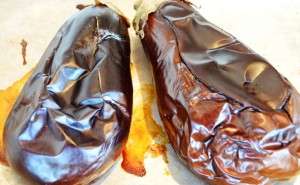
The cooked eggplants remind me of deflated balloons!
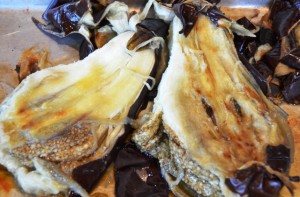
The eggplants were easy to peel, be sure to let them cool first!
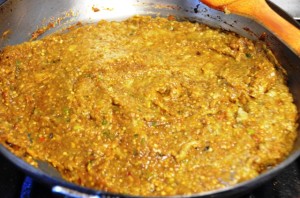
Cooking the eggplant with the sauce and aromatics
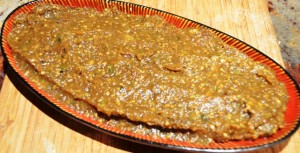
This year the strange-flavor eggplant made it to the table!
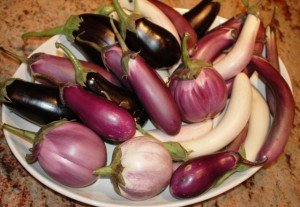
An assortment of beautiful eggplant from a previous season’s garden.
Strange-Flavor Eggplant from the China Moon Cookbook
She says this will keep in the refrigerator for up to a week, but it never lasts that long for us! I usually make a double batch.
Ingredients
- 1 to 1 1/4 pounds large eggplant (Italian or globe)
- 2 Tablespoons corn or peanut oil
- 1/2 teaspoon sesame oil
- thinly sliced green and white scallion rings for garnish
Aromatics
- 1 tablespoon finely minced garlic
- 1 tablespoon finely minced fresh ginger
- 1/4 cup thinly sliced green and white scallion rings
- 1/4 to 1/2 teaspoon dried red chili flakes
Sauce
- 3 tablespoons soy sauce
- 3 tablespoons packed brown sugar
- 1 teaspoon unseasoned Japanese rice vinegar
- 1 tablespoon hot water
Preheat the oven to 475F. Position the rack in the center position.
- Prick the eggplant well in several places with a fork or the tip of a sharp knife and remove the leaves. Bake on a baking sheet, turning once, until fork-tender, 20 to 40 minutes, depending on the size.
- While still warm, remove the stem end and the peel, scraping off and retrieving any pulp. Chop up the pulp and process the pulp and any thick baking juices in a food processor or blender until nearly smooth.
- Combine the aromatics in a small dish. Combine the sauce ingredients in a small bowl, stir to dissolve the sugar.
- Heat a wok or large heavy skillet over high heat until hot enough to evaporate a bead of water on contact. Add 2 tablespoons corn oil, swirl to glaze the pan, reduce heat to medium high. When hot enough to foam a scallion ring, add the aromatics and stir-fry until fragrant, about 15 seconds, adjusting the heat so they sizzle without scorching. Add the sauce ingredients and stir until simmering. Then add the eggplant, stir well to blend, and heat through. Remove from heat and adjust seasonings accordingly. Stir in sesame oil.
- Allow to cool, stirring occasionally. It will achieve fullest flavor if the eggplant is refrigerated overnight. Serve at room temperature with a sprinkling of scallions.

